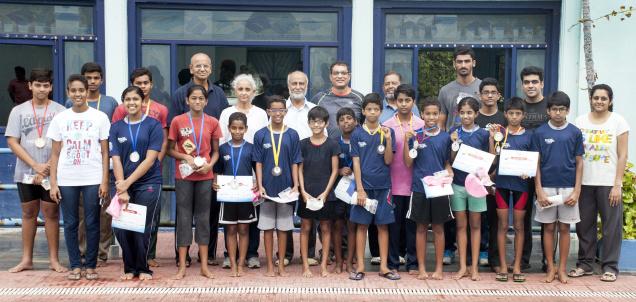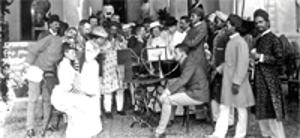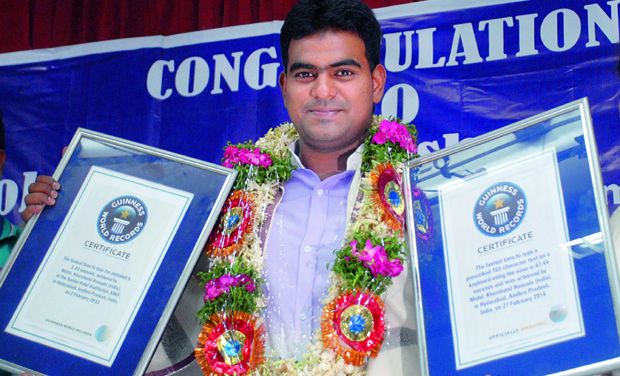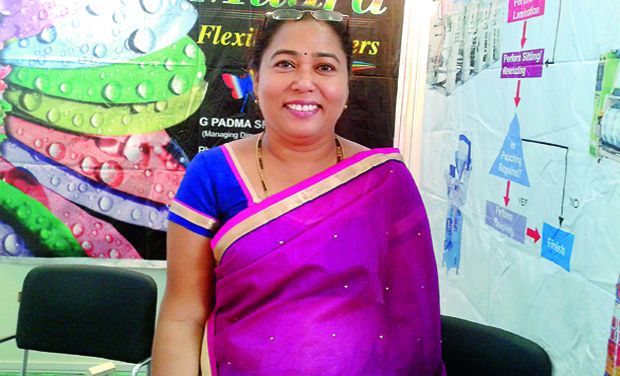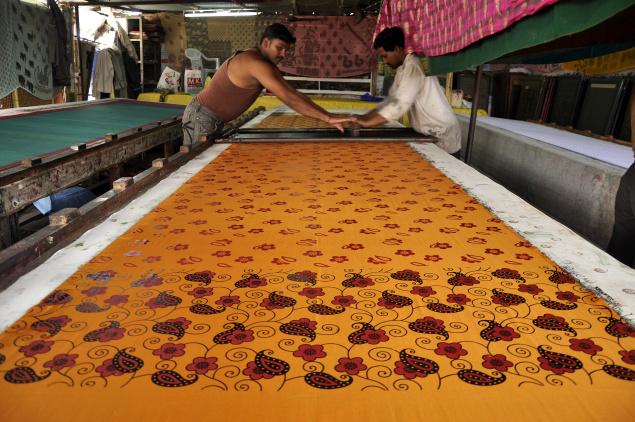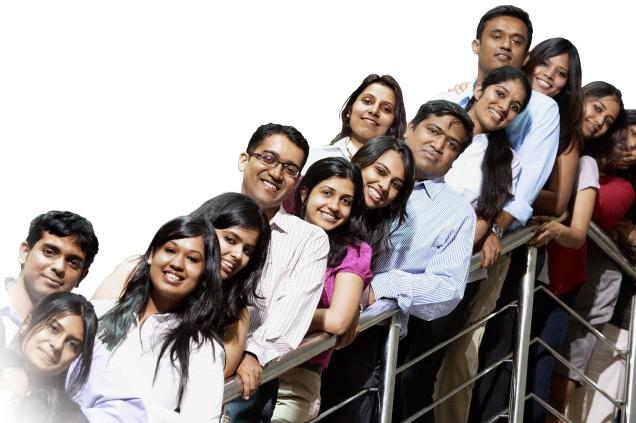
Management institutes look to re-jig the student mix for a holistic perspective
Puja Das talks excitedly about her new role as President of the graduate student board of the Hyderabad-based Indian School of Business. Conversing in the sandstone-coloured wind-swept cavernous atrium of the B-school, her enthusiasm is infectious.
The 26-year-old IIT Bombay graduate, who worked a little over two years in oil exploration company Schlumberger before joining ISB, has her agenda full: add lustre to the ISB brand, reach out to alumni, host national-level competitions… she’s brimming with ideas.
For ISB’s Deputy Dean Savita Mahajan this year has been in some sense one of twin triumphs. The Class of 2015 of the post graduate programme in management has 231 women students constituting 30 per cent of the total class size – the highest number ever since the school’s inception 13 years ago. “From the start of ISB, we had this target of 30 per cent in mind; it’s been steadily going up and this year is a landmark for us,” she explains. And, for the first time, the student’s body has a woman President: Puja Das won after a hard fought election, which saw six women in a field of 14 competing in two rounds of polling.
But, the landmark the Dean refers to isn’t just mere symbolism or a target to be achieved. It’s something that B-schools around the country have been grappling with these past few years: how to increase both academic and gender diversity in business schools. As Dean Mahajan explains, “Diversity of any kind; in educational background, gender, culture, is very useful in the learning process. It brings different skill sets and perspectives in the analysis of a problem situation and its possible solution. Particularly in management education, where the case method is used to illustrate real life situations, usually there is no single ‘right’ answer. Diverse opinions can challenge the mainstream view, and throw up out-of-the-box solutions, thus enhancing the whole group’s learnings and insights.”
As Das herself says of her a little over two-month stint at ISB, “We get to learn a lot from our colleagues, because they come from such diverse backgrounds.”
Importance of diversity
How important then is academic and gender diversity at B schools? Very much, going by what IIM-A Director Ashish Nanda said in an earlier interview to Business Line. “When I came here and met the students in different sections, my question was: How many of you are engineers? But I couldn’t ask the other questions; more than 95 per cent of the students were engineers. In our kind of classrooms, where learning is by discussion, if a teacher is just coming to teach fact and data then academic diversity doesn’t matter so much. But, if you have a class where most of the learning happens in interaction, and the faculty member is a facilitator, then it is important that students come from different points of view and are surprised by what others say and build on those learnings.”
Diversity, says Nanda, comes from different points of view; it comes from intellectual curiosity; gender; different socio-economic and educational backgrounds. “The participants of a classroom at IIM-A would benefit more if this were to happen,” he adds. Nanda, himself a 1983 batch alumnus of IIM-A, recalls that the imbalance was not so acute during his days as a student. And, now as Director of the country’s top B school, Nanda worked along with the admissions committee to restore some balance by making some proactive changes to the recruitment and admissions process for the 2014-16 batch. Partly as a result of these changes and with a greater recruiting effort by IIM-A in non-traditional areas, non-engineers constitute 11 per cent of the students to whom offers have been made this year, compared to 5 per cent or less of the batches in the past three years.
Also, 28 per cent of the offers, a record high for IIM-A, have been made to women applicants, compared to women constituting 11 per cent to 22 per cent of batches in the past three years.
But, as B-school dons point out, more women in management education indicates a quiet social phenomenon at work as well. ISB’s Mahajan says the pool of women entering the corporate workforce has multiplied otherwise one wouldn’t see the numbers going up in B-schools. “The gender scenario in the corporate world itself is changing and lot more women feel confident that this is a career they can build,” she says. Schools such as ISB and Great Lakes Institute of Management require a minimum of two years work experience to enrol for a one-year programme. GLIM’s Executive Director S Sriram says that traditionally very few women pursued higher education and those of them who did, got into humanities and social sciences and career wise, most aspired to become teachers and jobs of similar nature. “Modern women are pursuing engineering and other professional education and naturally they aspire to become managers and leaders of organisations. This is the supply side explanation.”
On the demand side, he says, corporates are increasingly realising the need and importance to have women managers and leaders. They are not only good in people management and organisational building due to their better developed EQ but also bring in possibly better corporate governance and ethics, as women tend to have less tolerance for compromise. “Even research conducted after the 2008 crisis found that companies with more women on board suffered less,” explains Sriram.
Uday Salunkhe, Group Director, WeSchool, says it’s all a domino effect due to the better policies in place that support women and overall a society that respects women for the talent they show. “With every woman you train, you fade the gender bias prevalent in many regions and strata and strengthen their determination for a better life. Well balanced gender diversity in all facets of life helps developing a healthier attitude and better respect for all. ” he adds.
Schools such as ISB have also been proactive in roping in women into B-school by reaching out to them during their undergraduate courses. It also admits women on an average who are younger then similarly qualified men. “We realised if we don’t give them an opportunity then or say you’re too young and work a couple of years and come back, they say there is too much pressure to get married and they may not be able to do the course later. It’s a valid reason. So we are open to taking them younger,” says Mahajan. But, even that is changing, she adds. With married students’ accommodation and conducive campus facilities, more married women are signing up for a B-school education — this year she says there are 45 married women on campus.
Best case practices
IIM-A’s Nanda recalls that two decades ago, MIT in the US used to have a similar problem of fewer women joining. It’s considered one of the top schools in hard sciences, but it was not getting many women students “and the reason was there was a general wisdom that you don’t get many women interested in hard sciences as the environment is not supportive of them.”
The leadership of MIT said it had to aggressively go and recruit women from schools, encourage them to apply; bring them to MIT to spend a couple of days; offer scholarships. “Today, MIT has almost 50 per cent women. And, in fact, it is considered one of the most women-friendly institutions. But, it took a decade. So we have to reach out to students; encourage people in society who think it’s important and provide motivation and incentives to people from different backgrounds to apply,” explains Nanda.
Anaita Singh, a student of the 2015 batch at ISB, who earlier worked in a bank, a government project and for a political party in the Delhi state elections, says earlier there was a set agenda for women, that they could work only in particular sectors. “We have more support systems now. And, now we are in a position to create something for ourselves rather than be stereotyped.”
Not just IQ, but EQ and SQ as well
The Chennai-based Great Lakes Institute of Management has traditionally had a high proportion of women in its batches since it started ten years ago. Executive Director S Sriram points out that managers who aspire to be in managerial and leadership positions need to have a strong EQ (emotional quotient) and SQ (social) apart from IQ.
“Our traditional education, and particularly in the Indian context, does not provide structured inputs to develop EQ and SQ. More particularly in management education, these aspects are very important as an overwhelming majority of students come from an engineering background which emphasises the IQ component almost to the exclusion of the other two,” he explains. One of the effective ways to respond to this of equipping future managers and leaders with an SQ and EQ component is ensuring diversity in terms of gender and the academic background they come from. “Women,” he says, “traditionally possess a higher EQ component. So, by being in the same class, interacting with them, looking at and learning from their perspective of managerial and leadership situations enables one to not only appreciate the EQ component but also develop it further.” People who come from diverse undergrad backgrounds bring in their own perspective to managerial issues/challenges. For example, he points out, a humanities person will look at a productivity problem very differently compared to an engineer. This not only enriches class room learning but also enables one to develop diverse perspectives.
source: http://www.thehindubusinessline.com / Business Line / Home> Features> New Manager / by Vinay Kamath / June 24th, 2014
